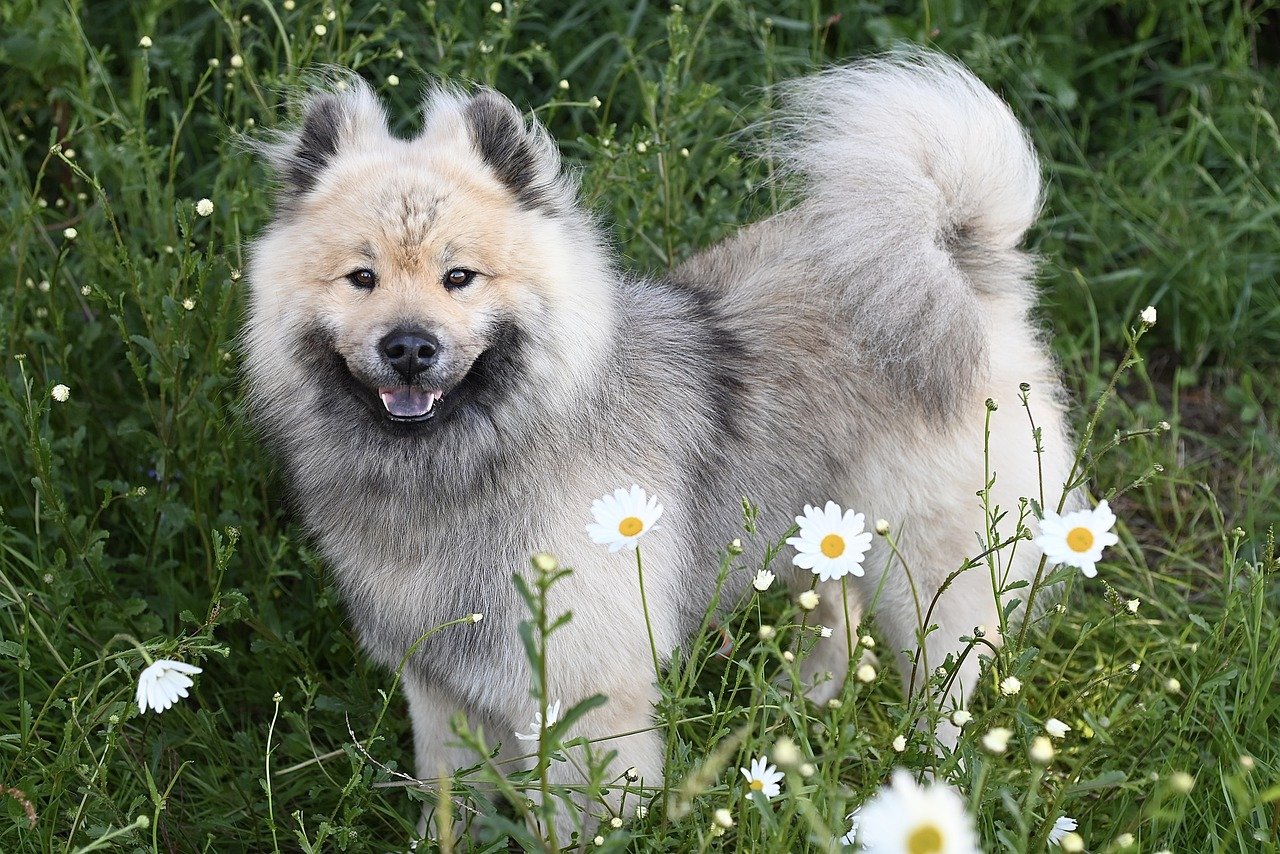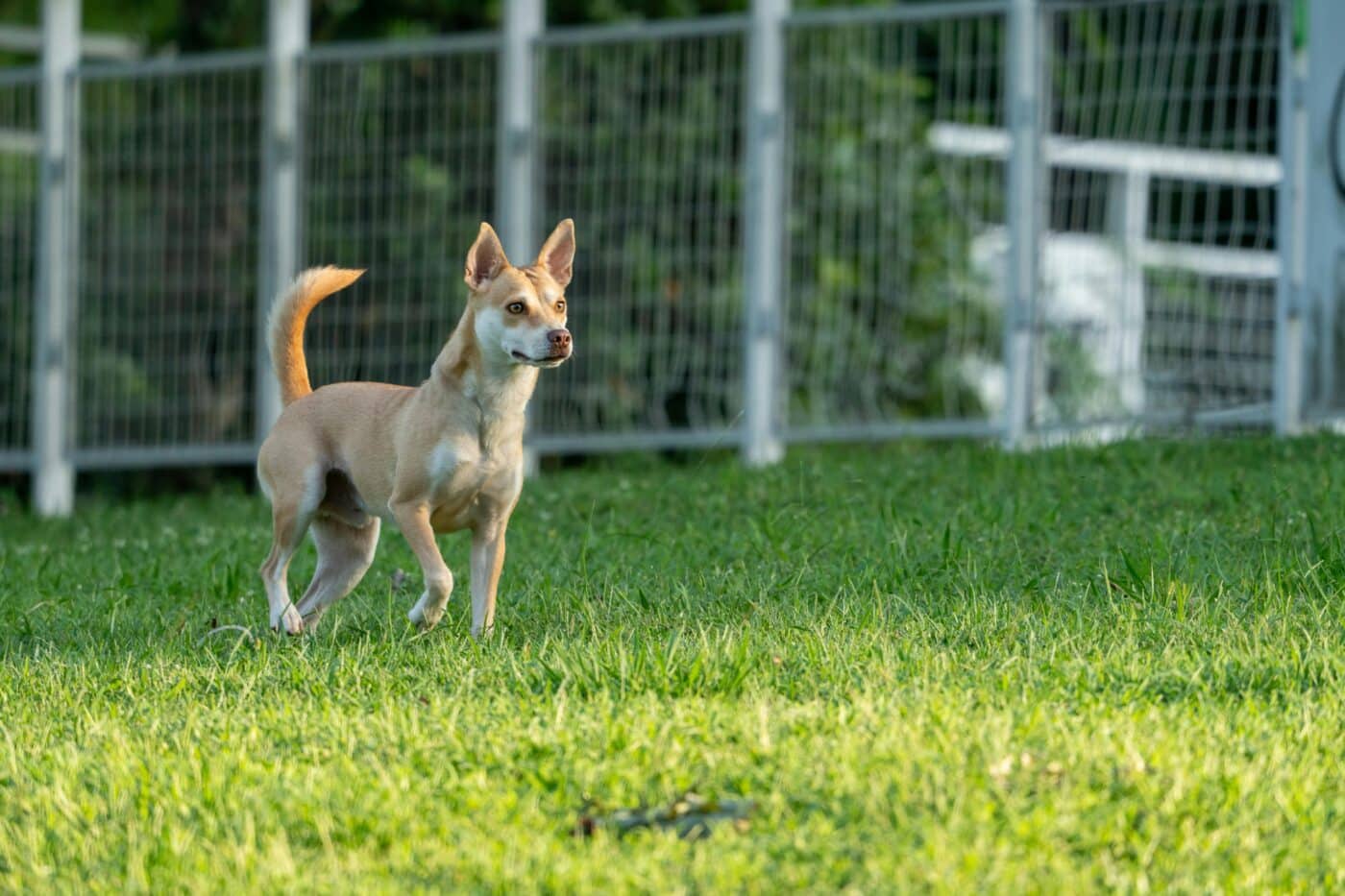

Dogs are known for their expressive nature, and one of the most fascinating ways they communicate is through their tails. While we often associate a wagging tail with happiness, there’s actually much more to it than that. Dogs use their tails to convey various emotions and messages, from excitement to anxiety to warning signals. Understanding the subtle tail movements and positions can offer incredible insight into your dog’s feelings and intentions. Here are seven surprising ways dogs adjust their tails to send different messages.
Tail Position and What It Means

The position of a dog’s tail is one of the first indicators of its emotional state. A tail held high, often with the tip slightly curled, can indicate confidence and alertness, signaling that the dog is in control of the situation. Conversely, a tail held low or tucked between the legs typically signals fear, submission, or anxiety. Dogs that feel threatened or nervous will often lower their tail and bring them close to their body. A wagging tail doesn’t always mean happiness; the tail’s speed, position, and firmness can tell you whether your dog is excited, anxious, or even agitated. The next time you see a tail raised in an unfamiliar posture, take a moment to observe the overall body language for a more accurate understanding.
The Speed of the Wag

The speed at which a dog wags its tail can convey a lot about its emotional state. A rapid, fast-paced wag indicates excitement, especially if the dog’s body is wiggling or moving energetically. Dogs wagging their tails at this speed are often happy or enthusiastic, whether greeting a family member or anticipating a fun activity like walking. On the other hand, a slow, deliberate wag can signal that the dog is cautious or uncertain. A dog wagging slowly while facing a new person or unfamiliar situation is trying to assess whether it’s safe to proceed. Pay attention to the tail’s speed and the dog’s overall body language to interpret its mood accurately.
The Wagging Tail’s Direction

The direction in which a dog’s tail wags also carries meaning. Research has shown that dogs may wag their tails to the right or left based on their emotional responses. When a dog wags its tail to the right, it may signal a positive, relaxed, and friendly feeling, often when encountering something or someone they enjoy. On the other hand, if the dog’s tail wags more strongly to the left, it could indicate a more fearful or uncertain emotion, especially if the dog faces a situation it perceives as potentially threatening. Understanding this subtle tail movement can help owners gauge how their dogs feel in different environments.
The Tail Between the Legs

A tail tucked between the legs is one of the clearest signs of a stressed, anxious, or frightened dog. It often occurs when the dog feels threatened or submissive. This tail posture is usually accompanied by other signs of discomfort, such as cowering, avoiding eye contact, or retreating to a corner. Dogs who are unsure or in a state of conflict may tuck their tails to signal that they are not looking for trouble. This behavior can be seen in dogs who are meeting new people or animals, at the vet, or during loud noises like thunderstorms. If your dog displays this posture, it’s a good idea to provide reassurance or a calm environment to help them feel safe.
Tail Up and Stiff

When a dog’s tail is held high and rigid, it often signals alertness or assertiveness. This posture can mean that the dog is paying close attention to something in its environment, such as a new person, animal, or object. It may be preparing to defend its territory or give a warning. While this can indicate confidence, it’s important to remember that not all dogs with their tail held stiff are aggressive; some dogs may use this tail position when they are simply trying to be assertive without intending harm. If a dog exhibits a stiff tail while encountering a new environment, make sure to monitor their other body language cues, as they may be evaluating the situation.
The Gentle Wag

Not all tail wags are high-energy and dramatic. Some dogs communicate through a gentle, soft wag, conveying a relaxed and contented state. A dog wagging its tail slowly and gently while resting or interacting with a familiar family member likely expresses affection or satisfaction. The wag may be small, and the tail’s movement might be barely noticeable to those not paying close attention. A gentle wag is typically a sign that the dog feels calm and at ease in its surroundings, making it a great indication of comfort and happiness. If your dog greets you with a slow wag, take it as a sign that they feel secure and happy in your presence.
The Tail’s Role in Warning or Threatening

Dogs often use their tails as part of a broader body language display when they are trying to warn or threaten another animal or human. When a dog’s tail is raised high and remains stiff, accompanied by intense eye contact or other aggressive postures, it usually indicates that the dog is ready to assert itself. This can be seen in situations where the dog feels territorial or protective. If the tail is raised and the dog shows signs of aggression—like barking, growling, or lunging—it’s important to proceed cautiously. A wagging tail in these circumstances doesn’t indicate friendliness; it may signal the dog’s seriousness and desire to establish dominance or control over a situation.
The Tail End Of Things

In conclusion, your dog’s tail is a powerful tool for communication. While a wagging tail is often linked to happiness, the truth is more nuanced. The position, speed, and direction of a dog’s tail offer valuable insight into its emotional state, from excitement to fear or aggression. Understanding these signals can improve your bond with your dog, helping you interpret their feelings more accurately. So, the next time you’re unsure of your dog’s mood, remember: it’s all in the tail—literally!
The post 7 Surprising Ways Dogs Adjust Their Tails To Send Different Messages appeared first on iHeartDogs.com.
